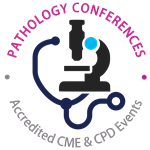
Petr Starostik
University of Florida in Gainesville, FL
Title: Implementation of NGS Causes Dynamic Shifts in Clinical Molecular Diagnostics
Biography
Biography: Petr Starostik
Abstract
The past decade witnessed a truly revolutionary change in ways how mutation detection is performed in a clinical laboratory. Single analyte tests were replaced in many labs by multianalyte next-generation sequencing, NGS. This technique significantly decreased sequencing cost pre base, enabled labs to analyze much higher number of samples at once, and broadened the analysis scope from a single gene to gene panels or even the whole exome/genome. Many new so far unknown gene mutations were discovered by NGS. They can be used as biomarkers in diagnosis and their availability led to changes in tumor classification. They are also potential drug targets to develop targeted therapies for. Several manufactures supply NGS instruments and reagents to detect both somatic and germline mutations. Many laboratories opt to develop their own laboratory-developed NGS assays which can be easily tailored to meet their needs. We developed both amplicon- and hybridization probe-based NGS assays used to detect driver and druggable mutations in different types of cancer. The assays were extensively validated and allow for quick and sensitive detection of point mutations and indels for the most relevant therapeutic genes in several types of cancer. The complexity of NGS does not make its implementation easy. NGS wet lab workflow entails several critical steps like sample and sequencing library preparation which are critical for success. Bioinformatics is an integral part of NGS and needs to be handled by an experienced IT specialist to not only develop he appropriate analysis pipeline but to also make the results available in the appropriate format in the electronic medical records. Administrative leadership is needed to secure proper reimbursement and keep track of government regulations and oversight.

